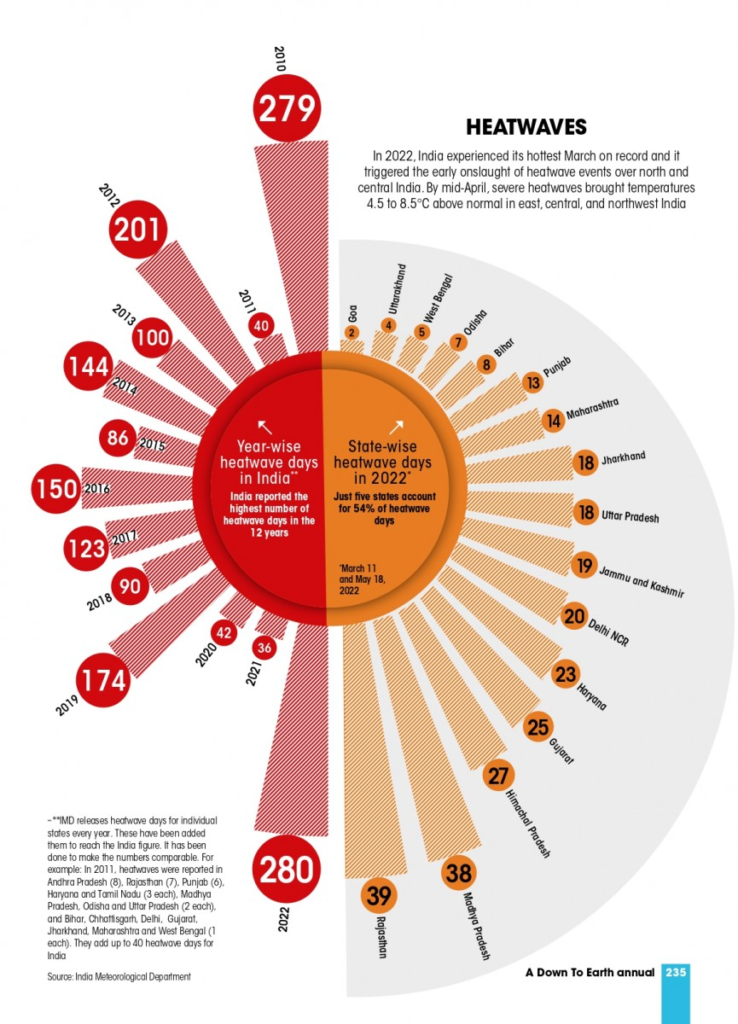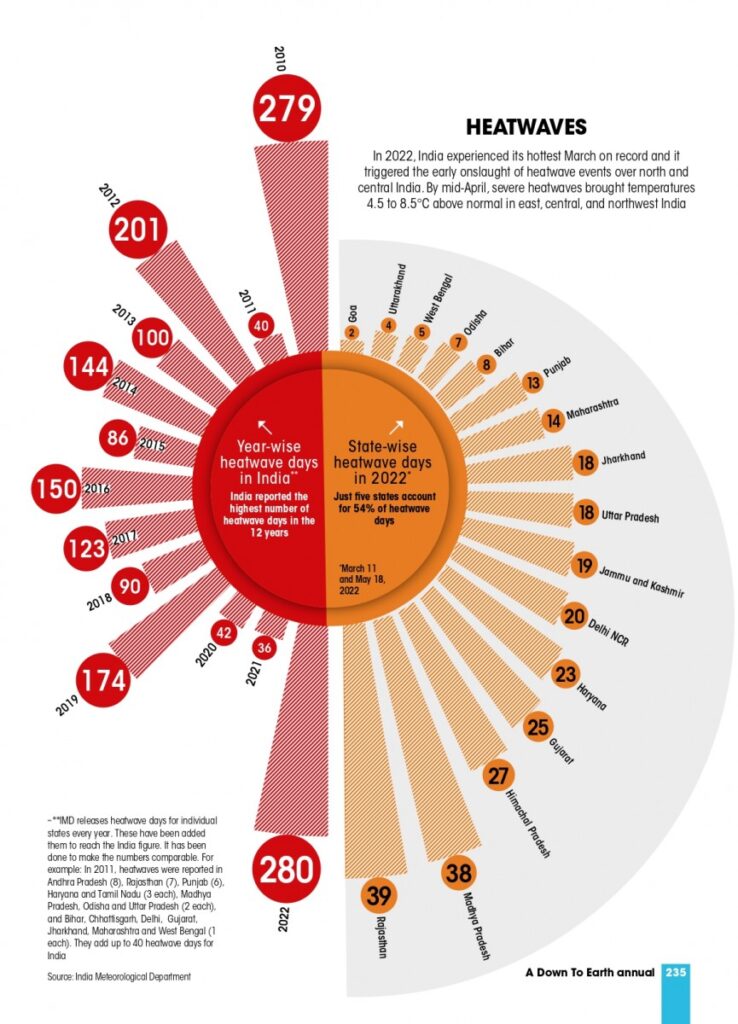Numbers tell several worrying tales in ‘State of India’s Environment: In Figures’, a report published by the Centre for Science and Environment and Down to Earth magazine on June 2.
Two-thirds of India’s rivers are contaminated with heavy metals.
Climate change is increasing internal migration in the country, even increasing human trafficking.
For all its proclamations of climate promises and pledges, India is off-target in 15 of the 17 government initiatives (such as achieving 175 gigawatts of renewable energy) that have a deadline this year.
These are some of the 39 factsheets that the report provides on various facets of the country’s environment. Researchers at CSE collated data from government departments, surveys, reports and databases, as well as other international reports. The team also supplemented this data with some of their own.
Key takeaways
The Wire shortlisted some of the main takeaways from the report:
1. Our coasts are eroding. More than a third of India’s coastline (~6,907 km) has witnessed some degree of coastal erosion or the other, between 1990 and 2018. West Bengal is the worst hit, with over 60% of its coasts facing erosion.

Photo: ‘State of India’s Environment 2022: In Figures’ published by Centre for Science and Environment.
2. The heat’s getting worse. This year witnessed the hottest March in 120 years. Heat waves are increasing in frequency, and we’re seeing more days of heatwaves this year.

Photo: ‘State of India’s Environment 2022: In Figures’ published by Centre for Science and Environment.
3. Heavy metal contamination:
Based on data from the Central Water Commission (from 764 river quality monitoring stations across 28 states) between 2018 and 2020, the report found that three out of every four river monitoring stations in India have alarming levels of heavy toxic metals.
These include lead, iron, nickel, cadmium, arsenic, chromium and copper. In one-fourth of the monitoring stations (spread across 117 rivers and tributaries), high levels of two or more toxic metals were reported. The Ganga isn’t free of heavy metals either. Of the 33 monitoring stations along the Ganga, 10 had high levels of contaminants (showing high levels of lead, iron, nickel, cadmium and arsenic in the river).

Photo: ‘State of India’s Environment 2022: In Figures’ published by Centre for Science and Environment.
4. Climate change and disasters:
Climate change is a bigger displacer of people than conflicts and violence, the report found. Climate disasters triggered around 76% of the internal displacements that the world saw in 2020. India is the fourth worst hit by such disasters, after China, Philippines and Bangladesh. The impacts of climate change also increase instances of displacement and migration, making people more vulnerable to trafficking (since traffickers target vulnerable sections such as women and children), the report also found.

Photo: ‘State of India’s Environment 2022: In Figures’ published by Centre for Science and Environment.
5. Food inflation:
The diet of an average Indian is already low on fruits, vegetables, legumes, nuts and whole grains, the report also found. To make things worse, India’s consumer price index-based inflation in April 2022 rose to an eight-year high of 7.79% due to an increase in edible oil and fuel prices.

Photo: ‘State of India’s Environment 2022: In Figures’ published by Centre for Science and Environment.
6. Our climate action is off-target. India will not be able to accomplish 15 of the 17 government initiatives (such as 100% source segregation at households, achieving 175 gigawatts of renewable energy and doubling farmers’ income) that have a deadline this year.

Photo: ‘State of India’s Environment 2022: In Figures’ published by Centre for Science and Environment.
7. Failure in implementing climate action will spell further doom.
Over the next 5-10 years, climate action failure will be the single biggest global risk. This is based on a survey of over 12,000 global leaders in business, non-profits, governments, academicians and others, conducted by the World Economic Forum Global Risks Perception Survey in 2021-2022.

Photo: ‘State of India’s Environment 2022: In Figures’ published by Centre for Science and Environment.
The report also highlights how some of India’s forests have gone missing in survey data and how only 12% of our plastic waste was recycled in 2019-20.
It also said that it’s no longer viable to be a farmer. The cost of cultivation has increased in India, it found, by almost 35% between 2012-13 and 2018-19. Yet the share of income from cultivation in an agricultural household has gone down. At the same time, 50% of agricultural households in the country are reeling under debt, and about 29 farmers and farm labourers die by suicide in the country daily.
“Data is about measurement and the better we measure, the better we will get at management – this is what we know and this is why we put together this dataset each year,” said Down To Earth editor Sunita Narain in a press release. “It helps us make sense of the changes we see in our world; it helps us understand what needs to be done.”
The report shows that we definitely need to do more, and do them differently, to bring ourselves back on track, added Narain at the online release of the book. “Business as usual will not work anymore.”
(Courtesy: The Wire.)




